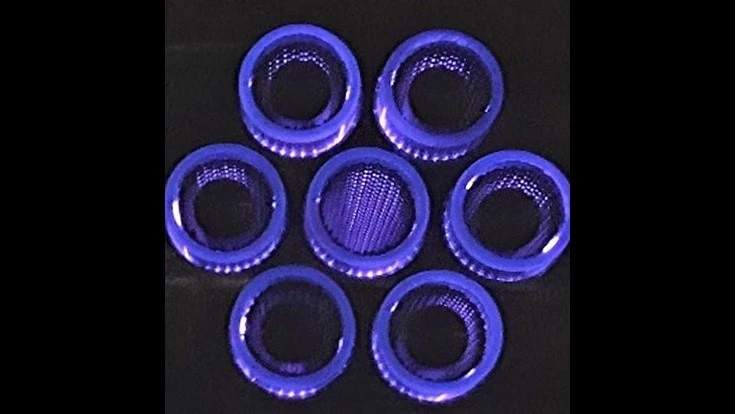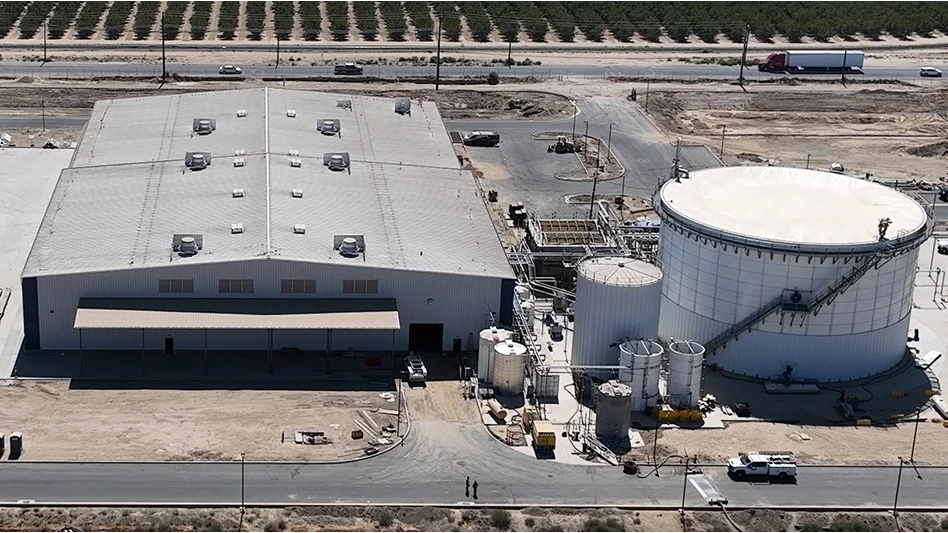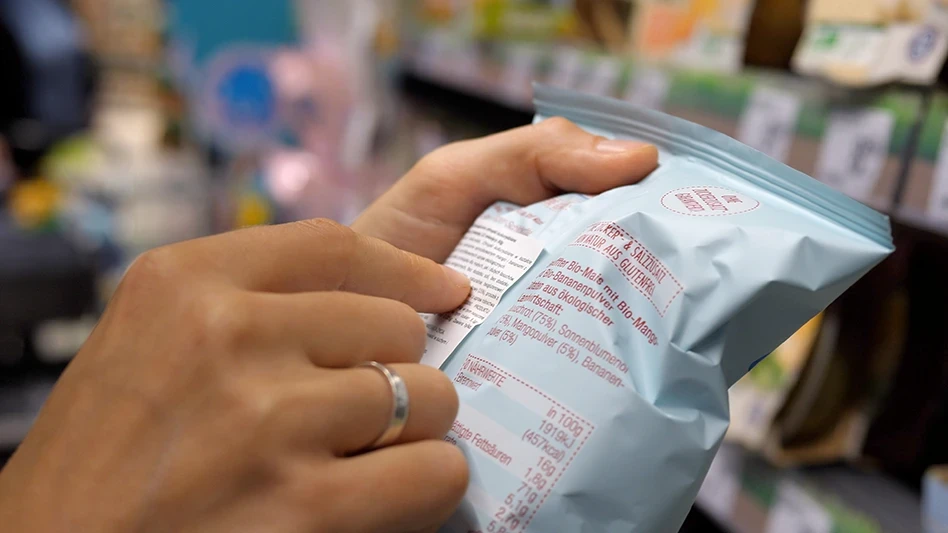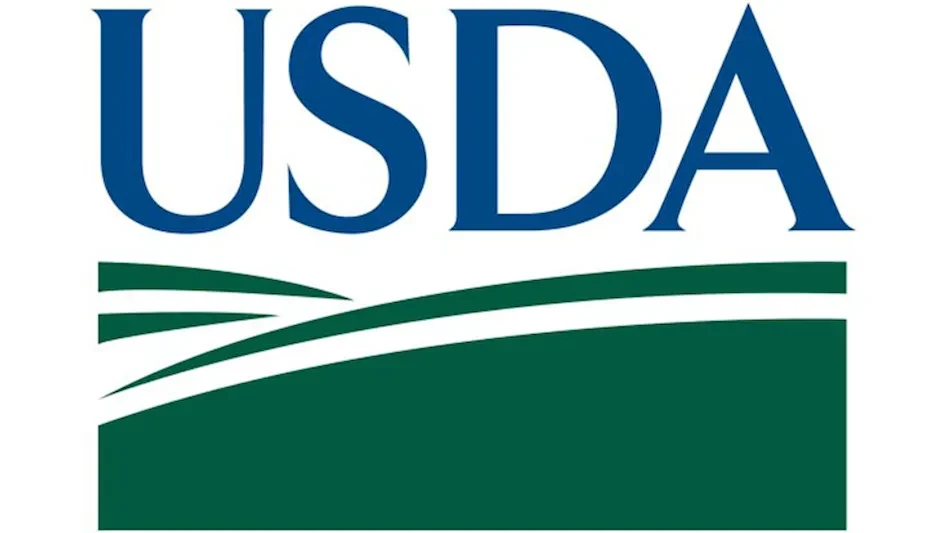
By Samantha Watters, UMD
What if you could kill 99% of the potentially harmful bacteria on the surface of your fresh produce in one minute with just the flip of a switch? Consumers could have devices similar in size and operation to a microwave oven, while restaurants and food processors could have larger devices built into their production and processing lines - no water, no waste, no antimicrobial resistance, minimal chemical residues, and completely sustainable with only a small amount of electricity and air needed. This has become plausible due to research at the University of Maryland (UMD) focused on innovative work in low-temperature plasma science.
In a recent paper published in Plasma Processes and Polymers, researchers from Materials Science and Engineering (MSE) with the Institute for Research in Electronics and Applied Physics (IREAP) and Nutrition & Food Science (NFSC) in the College of Agriculture & Natural Resources (AGNR) reported 99% E.coli kill on the surface of fresh produce after just one minute of treatment in a process called etching and surface modification, where the tiniest layer of the outer membrane of bacteria is damaged using what is essentially electrified air, also called plasma.
“Plasma is what’s called the fourth state of matter, and it is technically the most abundant state of matter in the universe,” explains Gottlieb Oehrlein, MSE professor. “There are the solid, liquid, gaseous, and the plasma states of matter. The latter is an electrified gas and the most energetic and reactive state of matter. We can use electrical energy to produce this state from air, and the reactive species generated have very strong impacts on pathogens where they can etch part of their outer membranes and change them biochemically.”
Oehrlein and his team are known in the field of plasma science for their work on plasma-material interactions. Most people think of plasma as the technology behind plasma televisions and computer chips, but this electrified air can be used in many other ways. In fact, it is already prominently used in the healthcare industry to sanitize surgical tools, and clinical trials in dermatology have also been performed for the treatment of chronic skin diseases. The plasma is concentrated to look like a very tiny blowtorch, but cold to the touch.
“Microscopically the bacteria surface is bombarded by these exotic plasma species. This leads to material removal and surface modification,” says Pingshan Luan, lead author on this work and a recent graduate from MSE. “Once the composition is changed, the bacteria cell wall loses its functional and structural integrity.”
This is what makes the concept of antimicrobial resistance irrelevant in a process like this, because the changes are structural, making this a very appealing option for food sanitation. “Resistance would never happen with plasma because this is structural stress and breakdown,” says Oehrlein. It is also a cold process unlike a traditional blowtorch, which is perfect to protect food quality. “Right now, there is an explosion of interest in plasma sterilization for food, and this work provides some mechanistic understanding on processes that are operative,” adds Oehrlein.
This is in part due to the recent rise in foodborne illness outbreaks and the increased attention to food safety. People are making healthier food choices, driving a greater demand for fresh and unprocessed food. Fresh fruits and vegetables are often consumed raw, contributing to increases in foodborne disease outbreaks from 0.70% in the 1970s to 33% in just 2012 alone. While foodborne illness from fresh produce is quite rare, the need to ensure that these products are properly sanitized before consumption is apparent.
“The U.S. has the one of the safest food supplies, but fresh produce is still a substantial source of outbreaks,” explains Rohan Tikekar, NFSC assistant professor. “The problem is that we don’t have a kill step for our fresh produce. We harvest them, we might do some postharvest cooling, then we may wash the produce to pack it and ship it.”
However, even washing produce can be problematic. “The washing process is a double-edged sword,” says Tikekar. “It makes produce look appealing and removes dirt, but if it is not done properly, water becomes a carrier for this small amount of bacteria to spread to a larger batch of produce. You may start out with say 10 lettuce heads that are contaminated, and with improper washing, you might end up with 10 tons of lettuce that is contaminated.”
On top of that, this process is highly resource intensive and not particularly environmentally friendly. “Washing of produce is an energy and resource-intensive operation, and while the numbers vary, you could use as much as 10 pounds of water per pound of produce,” says Tikekar. “This can be a major source of water consumption. In addition, typically you have to chill the water to maintain the quality of the produce, so the whole process is refrigerated which takes a lot of energy. What we have been doing is adding chlorine-based sanitizers to the water, and this way the bacteria gets killed before it gets transferred to another product. This is highly effective, but chlorine-based sanitizers also dissipate quickly, and you have to replenish these continuously to maintain chlorine levels. While this is safe and effective, there are limitations to this process, and there is a push to find alternative methods to compete with chlorine as a food sanitizer due to perceptions and issues of resistance.”
Plasma for food sanitation is a sustainable, chemical-free process, which makes it appealing. “Conventional decontamination processes use a lot of water and aqueous sanitizers such as chlorine and chlorine dioxide. The water bill - eventually paid by the consumers - is very high,” explains Luan. “The plasma approach doesn’t use any water. Pretty much all we need is a little electricity and air. Air is pretty much free and electricity is only about 12 cents per kilowatt hour. With our technology, you could sanitize all three meals a day and it wouldn’t cost a single dime. The process is environmentally friendly and can also be integrated easily into existing food processing lines like conveyor belts.”
According to Oehrlein, it could be as easy as “flipping a light switch on and off.” Tikekar says, “You could do this at an industrial scale but you can also imagine doing it at a restaurant scale, dining halls, or even individual consumers’ levels where you can potentially have a microwave-like device that could inactivate pathogens just prior to consumption.” Luan adds, “With one minute of treatment, you can kill more than 99% of the bacteria on spinach leaves, so it is very effective.”
While there is little risk associated with this process, researchers are prepared to dig into this in the future. “Side effects of our processing technology are still being examined, so in the future we will look more closely at the change in nutritional content,” says Luan. “The only thing so far tested is the physical appearance of the food, but nutrients like vitamins and antioxidants haven’t been characterized. However, from our experience, plasma is a surface processing technology, and the affected volume is usually within a couple tens of nanometers from the surface, which is about a ten millionth of the green leaf, so it is unlikely that the nutritional content is greatly affected. We are still looking into all potential side effects before this technology can be used, but the potential is there and very promising.”
The paper entitled “Decontamination of raw produce by surface microdischarge and the evaluation of its damage to cellular components” is published in Plasma Processes and Polymers and available here.
Latest from Quality Assurance & Food Safety
- IFT Celebrates Inaugural Section Impact Award Winners for Volunteering Excellence in Food Science Community
- Ron Simon and Associates Files E. coli Lawsuit Against Grimmway Farms of California
- Boar's Head Launches New Resource Detailing Company's Food Safety Standards and Protocols
- FSIS to Host Virtual Public Meetings on Salmonella Framework
- Climate-Smart Soybeans Enter U.S. Market
- Yoran Imaging Introduces Thermal Imaging-Enabled System for Induction Seal Inspection and Analysis
- GDT Highlights Food Safety Solutions for Food Processing and Packaging Facilities
- FSIS Issues Public Health Alert for Ineligible Beef Tallow Products Imported from Mexico





